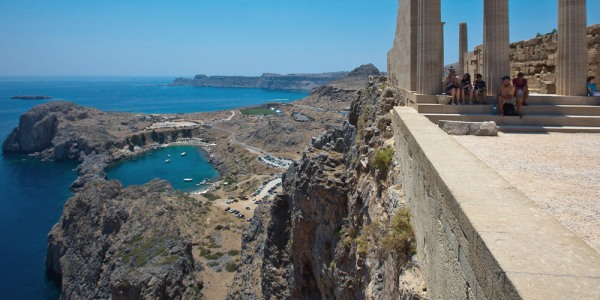Years ago, when I was growing up and my father was stationed in Italy with the Air Force, my mom and dad took the family (three boys) off on camping trips through Europe. These were extended affairs, sometimes lasting a month or more, and we went everywhere: to the Alps and to the Mediterranean, to bustling cities and tiny walled towns, to wine festivals and beer fests, and to every European capital. We traveled in a Volkswagen van with a tent, gas stove, tables and chairs — everything needed to set up a home away from home.
Camping in Europe is not the rustic and remote experience that many Americans imagine. In Europe, campgrounds are located near cities. Tents are pitched close together, and campfires are not usually allowed. There are a surprising number of campsites sprinkled throughout Europe, and the campgrounds are rarely full except those directly on popular beaches in the middle of summer.
My family would set up camp wherever we decided to stop. In Copenhagen we camped on the bus route to Tivoli Gardens. Outside Cologne, we pitched tents on the banks of the Rhine River. In Chiemsee, right on the lake; north of Pisa, on the sandy beach; in Amsterdam, right next to the soccer stadium; at the edge of Munich for Oktoberfest; in a lemon grove outside Sorrento — with views of Vesuvius.
Each time we arrived at a new campsite, we would select our spot, park the van, pitch our tent, roll out the sleeping bags, set up the tables and chairs and then explore the campground. It was fun to get to know the nearby campers, and the family would spread out guidebooks and brochures on the camp table to figure out the next day’s activities.
Yes, this is camping, but camping in relative luxury. European campgrounds are highly developed. Most include showers with hot water, electricity, places to wash dishes and a central bar/general store area where many campers gather each night. Some campsites have swimming pools, restaurants, tennis courts and playing fields. Most campgrounds near major cities and tourist sights also have good transportation from the campground to town.
Making friends is easier at a campground than in a hotel. Campers help each other out with missing condiments. They return towels and maps that have blown into their campsite. They share coffee, TV sets, music and stories. Something about camping brings out friendliness in everyone.
Slideshow 23 photos
A European tour
For families looking for a good way to introduce the children to Europe, camping or RVing is ideal. It’s a great family experience and it’s also a bargain: about 25 to 35 euros a night for a family of four.
But what about renting a van or camper in Europe? You can do it. In fact, it’s cheap. It’s a bit of a hassle, but it isn’t all that difficult.
According to the AutoEurope Web site, a family of four can rent a van for a month for less than $1,800 or a station wagon for less than $1,500. A two-week rental runs from about $1,200 for a van and $800 for a station wagon. The leading American guidebook for camping with a vehicle in Europe is “Europe by Van and Motorhome,” written by David Shore and Patty Campbell. This guide includes plenty of information about renting campers and motor homes, including rental costs.
If you are an RV owner and you plan to stay in Europe for two months or more, it may be less expensive to ship your RV to Europe. “Take Your RV to Europe,” by Adelle and Ron Milavsky, provides a step-by-step guide to the process as well as a budgeting guide that will help you plan for travel expenses (including fuel, which is expensive throughout Europe). Alternatively, intrepid campers can rent an RV or motor home through AutoEurope (800-223-5555; ask about the lease program for longer stays).
As for the camping gear, bring your own tent and sleeping bags (these will fit into a duffle bag that the airlines can handle easily), then buy a simple camp stove, lantern, pots, pans and plastic dishes once you are in Europe. (Don’t bring a Coleman stove; refills are almost impossible to find in Europe. Instead, look for local equipment, like GAZ lanterns and stoves, which are ubiquitous in Europe.) There will be some additional purchases after the first night, but after about three nights you’ll be all set.
Sure, a camping trip in Europe takes more planning than a guided tour, but the adventure more than makes up for the hassles.
Charles Leocha is nationally-recognized expert on saving money and the publisher of Tripso. He is also the Boston-based author of "SkiSnowboard America & Canada." or . Want to sound off about one of his columns? Try visiting .
